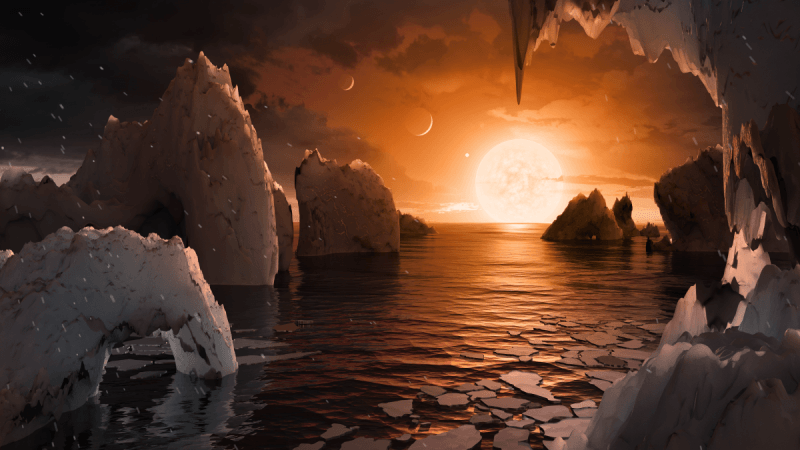
Researchers have made a pathbreaking discovery and found out that two of the seven Earth-sized planets orbiting a distant ultra-cool dwarf star, known as Trappist-1, could host living beings. The study says the planets might have conditions to support life and there may be liquid water on the surface.
Also Read: NASA releases video of recently discovered ultra-cool neighbour Trappist-1 [VIDEO]
Trappist-1, which is an ultra-cool dwarf star, is located some 40 light-years from Earth and thus it cannot be explored in person. However, with the help of different models, researchers studied the factors that will help them determine if those seven Earth-sized planets are habitable.
In their study, Amy Barr, senior scientist at the Planetary Science Institute, and her colleagues found out that planets labelled Trappist-1d and 1e may be most potential to support life. Scientists believe that they can use NASA's James Webb Space Telescope to study the planets in detail. (These planets are referred by letters b through h in order of their distance from the sun).
A study, which is set to be published in the journal Astronomy & Astrophysics, calculated the balance between "tidal heating and convective heat transport to assess their habitability."
"Assuming the planets are composed of uniform-density noncompressible materials (iron, rock, H2O), we determine possible compositional models and interior structures for each planet. We also construct a tidal heat generation model using a single uniform viscosity and rigidity based on each planet's composition," Barr mentioned in the study.
"The compositions for planets b, c, d, and e remain uncertain given the error bars on mass and radius. With the exception of TRAPPIST-1c, all have densities low enough to indicate the presence of significant H2O. Planets b and c experience enough heating from planetary tides to maintain magma oceans in their rock mantles; planet c may have surface eruptions of silicate magma, potentially detectable with next-generation instrumentation. Tidal heat fluxes on planets d, e, and f are twenty times higher than Earth's mean heat flow," the study says.
"Conclusions. Planets d and e are the most likely to be habitable. Planet d avoids the runaway greenhouse state if its albedo is & 0.3."








